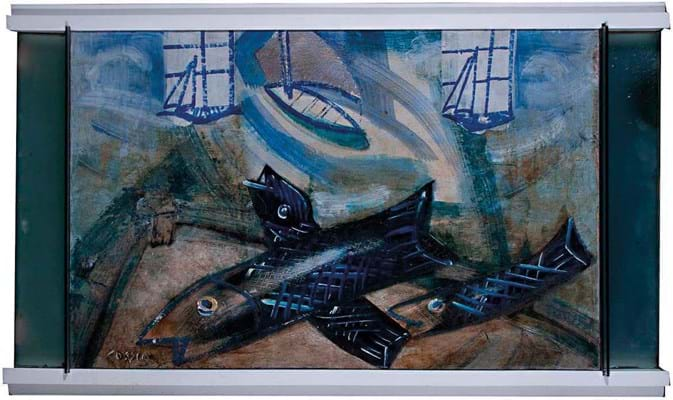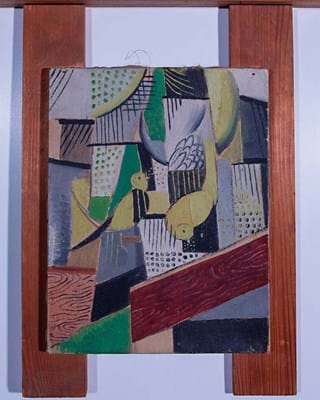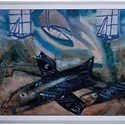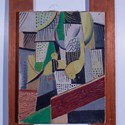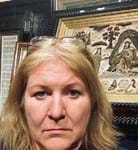
The late 19th century Fang Ngil mask from Gabon that made €4.2m (£3.53m) in an auction held by the Hôtel des Ventes de Montpellier.
A well-provenanced African Fang mask dating from the late 19th century has sold for €4.2m (£3.53m) in a French auction.
The 21½in (55cm) high mask, which is covered in white kaolin and has the distinctive oval shape of these works created by the Fang peoples of Gabon, belonged to Governor René-Victor Edward Maurice Fournier (1873-1931) and had descended through his family until it was offered at the Hôtel des Ventes de Montpellier (25% buyer’s premium) on March 26.
Fournier pursued a career in Africa and in August 1908 was appointed to Dakar where he remained until 1917.
Director of the cabinet of the General Government of French West Africa, he was appointed 2nd Class Governor on September 26, 1916, and met the ethnographer Maurice Delafosse who introduced him to African art.
Masks such as this would have been worn by a member of the Ngil secret society, a group who travelled through villages searching for troublemakers – including those suspected of witchcraft – and administering justice in Fang communities.
They are rare survivors because these traditional rites of justice in Ngil society were discontinued in the 1920s. Many of the known examples are now in museums. Four of them were shown in an exhibition titled In their Native Forests, devoted to the arts of Atlantic Equatorial Africa, held at the Quai Branly-Jacques Chirac Museum in 2017-18.
The mask offered in Montpellier had been estimated at €300,000-400,000 but on the sale day it was pursued by 10 bidders far above that level, with the hammer finally falling at €4.2m.
This is the second-highest price recorded at auction for a Fang mask following the €5m (then £3.42m) paid in a sale held by Enchères Rive Gauche at Drouot in 2006 for a mask from the Verité collection. The buyer is a European collector.
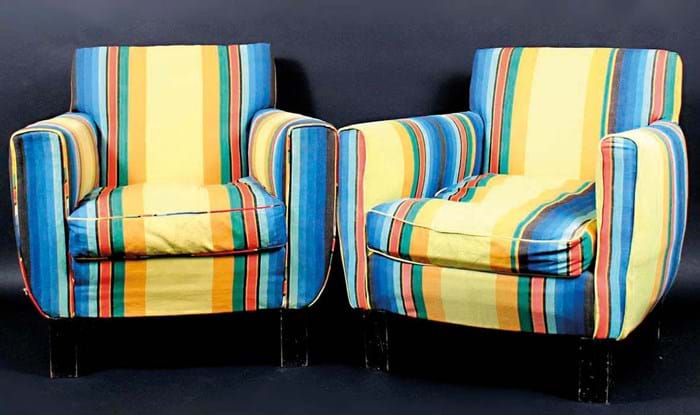
A pair of armchairs designed by Marcel Coard from Jeanne Tachard’s villa, Les Vingt Pins in Sainte-Maxime, which made €7500 (£6300) in an auction held by the Hôtel des Ventes de Montpellier.
The sale also included around 90 lots that had come from the collection of the successful French milliner turned art collector Jeanne Tachard (1837-1963) who was a patron of the interior decorator Pierre Legrain, a friend of the couturier Jacques Doucet and knew many artists of the Art Deco period.
The Tachard ensemble, consigned by the children of her adopted son, ranged across paintings, Asian works of art and furnishings from the Deco era but also featured examples of African ethnographic art, a field for which Tachard was an early enthusiast.
Keenly contested
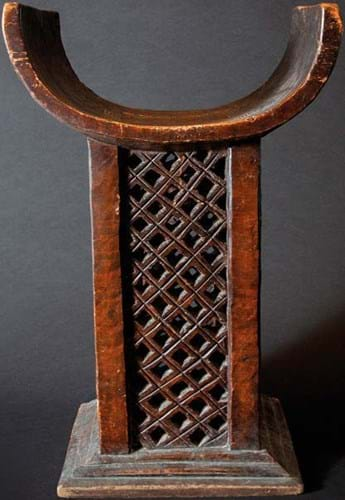
Two African wooden seats from the collection of Jeanne Tachard featured in the Hôtel des Ventes de Montpellier auction. This throne-like example from Dahomey Benin realised €71,000 (£59,665).
Two of these pieces were among the collection’s best-sellers. A carved wooden throne seat from the Dahomey Benin Kingdom was keenly contested at the auction and ended up selling for a multiple of the €5000-10,000 guide at €71,000 (£59,665).
The seat had come from Tachard’s Art Deco villa in Celle Saint Cloud for which Legrain designed the interior, and was one of several examples that served as a model for Legrain’s designs, in this instance a cerule chair exhibited at the 1924 Salon des artistes décorateurs.
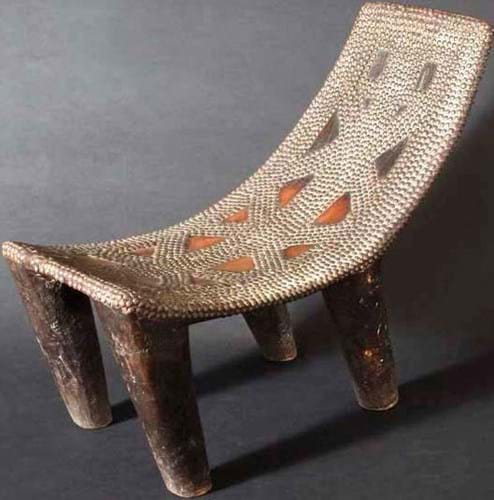
Two African wooden seats from the collection of Jeanne Tachard featured in the Hôtel des Ventes de Montpellier auction. This Ngombe studded chair made €44,000 (£36,975).
The other African top-seller was a curved and studded chair from the Ngombe people of the Democratic Republic of the Congo. This had inspired a curved seat designed by Legrain that is now in the Richmond Virginia Museum of Fine Arts. This piece also outpaced its €8000-15,000 guide to sell for €44,000 (£36,975).
Notable results for the paintings from Tachard’s collection included two works in their original frames by Legrain: Les Poissons, a 2ft 1in x 3ft 6in (64cm x 1m) oil on canvas by Pancho Cossio (1894-1970) exhibited at the Galerie de la Renaissance in 1929, which sold within the €30,000-50,000 estimate at €41,000 (£34,450), and a 14 x 11in (35.5 x 27cm) Cubist composition by Angel Zarraga (1886-1946) which made €33,800 (£28,405) against a guide of €30,00-40,000.
£1 = €1.19


